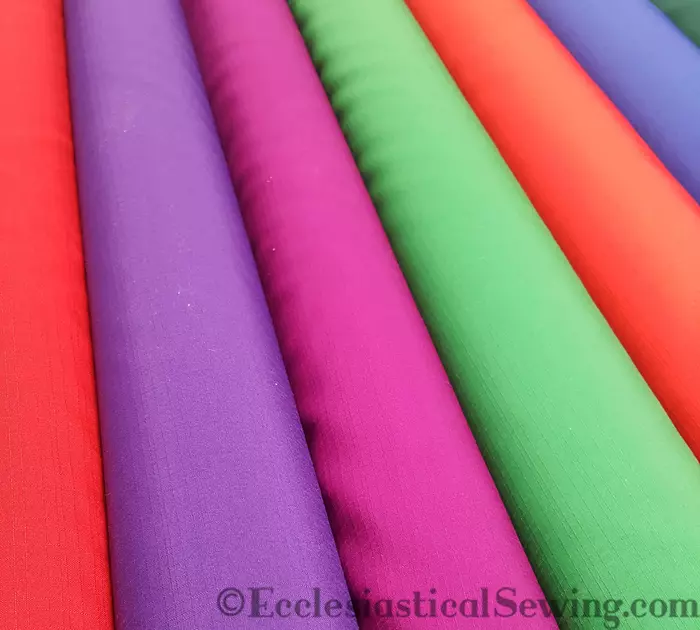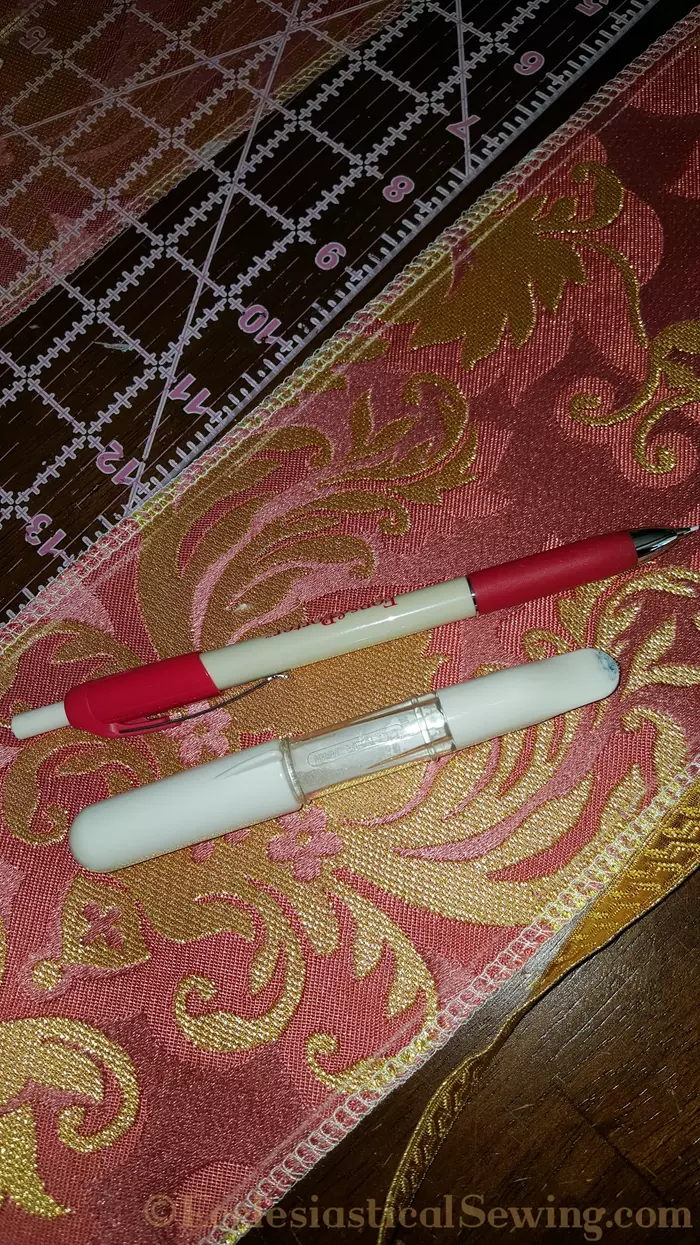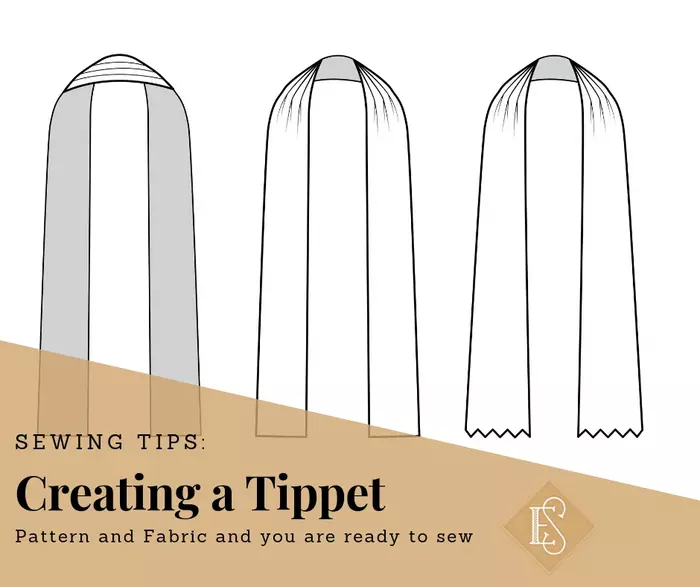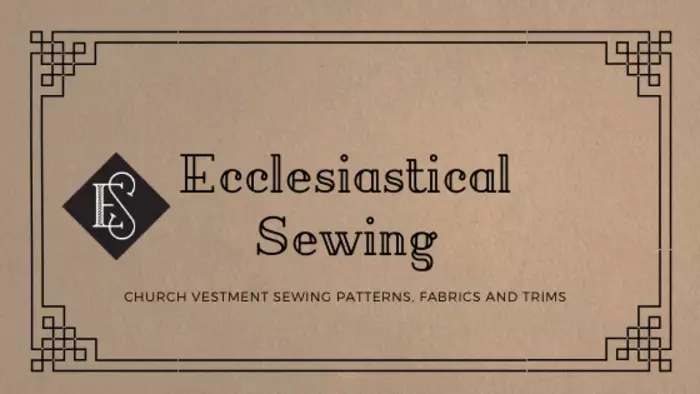Sewing Church Vestments and Linens: 10 Tips for Success
Sewing Church Vestments and Linens: 10 Tips for Success
We know many churches would love to have new vestments or altar hangings. But for many churches, the ideas never go beyond being an idea. Creating church vestments is often beyond the financial reach of many churches. They may think about a new set, look through the catalogs, and give up in despair. Here are our tips for Sewing Church Vestments and Linens: 10 Tips for Success!
Yet it need not be that way. There are so many options to have beautiful vestments and paraments to be part of the worship life at your church. Here is a list of ideas to help your church have new items of beauty for your worship community.
- Start with a small project that leads to success. So often churches will want to take on big projects for their church. But that can lead to overwhelm and so many other issues. Start small, be successful with ONE project – something very simple, and build from there. Ideas for small projects might include an urn pall for Cremeans, a chalice veil, a stole, or a small banner.
- Pick simple fabrics for a first project – maybe a solid fabric like Carlisle, or a silk dupioni. Pick something that does not have a pattern repeat unless you are used to working with fabric patterns. Also, picking a simple fabric removes the fear of cutting that often comes with more expensive fabrics. Give yourself grace that sometimes you will spend money on a project that may not turn out perfectly, but this is a part of the learning. It is OK to make something that isn’t perfect.

- Finish the project or complete it as best and as soon as you can and then start on another project. Don’t sit and obsess over the first project thinking it must be perfect. It won’t be, and that is OK. You are learning and building skills. Practice, practice, practice.
- When you finish a project, take time to reflect on what you learned, review your project, and give yourself praise that you completed it, that you learned from it, and note all of the positive things that came from doing one project.
- Pick one thing and only one thing about your project that was not quite how you would like it to be. Focus on that one area of improvement when you begin your next project.
- Repeat this process over and over to build both your skills and confidence.

- When you have made several smaller items with increasing success, then start thinking about a large project, but follow these same steps. Never jump in with fabric that costs hundreds of dollars per yard until you first have several successful smaller projects under your belt.
- When you want to start working with fabric patterns, and matching, start with items that are still a bit more reasonably priced to learn how they work. The attached images of the Gold and white brocade are an example of a fabric that would be useful in creating something lovely for a smaller parish, or for practice. One could practice learning how to cut orphrey bands or learn to add trim to the edge of an orphrey. This type of fabric would also be good to practice how to cut and place orphrey bands on a chasuble for the first time.

- Know that when you start sewing something new, you may feel uncomfortable. That is OK – it’s something new. We learn and grow when we challenge ourselves by doing new things.
- Don’t skimp when it comes to church vestment sewing patterns and instructions. Pick good resources as tools for learning and success. Read and learn. Creating church vestments is like any other skill. It takes time, practice, and patience to learn these skills. They are not beyond the reach of anyone with a desire to do this type of work.

- For those who are ready, those who have successfully worked through the steps, and have grown their skills, take a leap of faith and take on that big dream church vestment sewing project! It can easily be accomplished by breaking it down into smaller steps and tackling those steps one at a time
Ecclesiastical Sewing Upcoming Plans
Over the years, we have been blessed to be working with some of the best fabric and trim suppliers from all over the world. We have a wide range of fabrics at introductory prices as well as items such as exclusive silk damasks and brocatelles. We also are proud to offer our exclusive Luther Rose Brocade to those of the Lutheran faith. And have a full line of church vestment patterns and linens available for those who wish to sew traditional church vestments. We are currently working with our technical writer and illustrator to create complete sewing instructions for all of our patterns, too! As the instructions become available, we will keep you posted!
And what else is new and on the horizon for Ecclesiastical Sewing? Here are just a few hints of the many things we are working on so we may better serve you and the church: The Apostles will be a major focus for the coming year. We are working on resources such as designs, banners, references, embroidery patterns, and many more Apostle-related items.
And there is the big mystery package that showed up at the studio about 2 weeks ago!
We consider the work we do to be a blessing – to bring items of beauty to the lives of many to serve the Lord and His Church with our gifts and talents and help others so they may also serve in their own churches.
Soli Deo Gloria
Quick Sewing Tip: Add Goldwork Dove Appliques to Red Stoles for Pentecost
Vestment making Classes
Stole Ends: Quick Tips








 RSS - Posts
RSS - Posts
You must be logged in to post a comment.